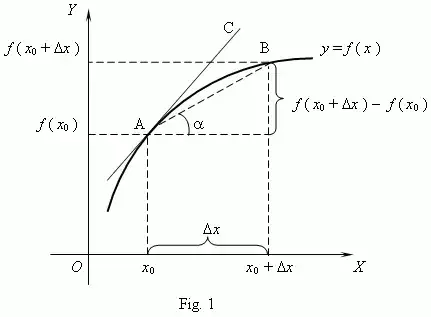The finite-difference expression $g(x,\Delta x)=\dfrac{f(x+\Delta x)-f(x)}{\Delta x}$ is depending on two parameters, $x$ and $\Delta x$. The first indicates a "location", and the second a "scale".
Working with these two parameters is much more complicated than a single one, and calculus would certainly have made much slower progress without the possibility of getting rid of the scale.
It turns out that when the functions are smooth (local fluctuations decreasing with scale), the finite difference stabilizes to a constant value when you reduce $\Delta x$, and this constant value is representative of the local behavior of the function.
Hence, by convention you extend $g(x,\Delta x)$ to $g(x,0)$ by assigning this constant value.
Actually, the nuance between finite-difference and derivative (infinitesimal difference if you like) indeed appears in your example
$$\frac{\Delta f}{\Delta x}=2x+\Delta x,$$
which is more complicated than
$$\frac{df}{dx}=2x.$$
The difference may seem futile, but you quickly see that it is not:
$$\frac{\cos(x+\Delta x)-\cos(x)}{\Delta x}=\frac{\cos(x)\cos(\Delta x)-\sin(x)\sin(\Delta x)-\cos(x)}{\Delta x}$$ does not simplify, whereas
$$\cos'(x)=-\sin(x).$$

$$instead of$. (That also makes some things, e.g. fractions, larger.) – mrf Sep 25 '15 at 07:23